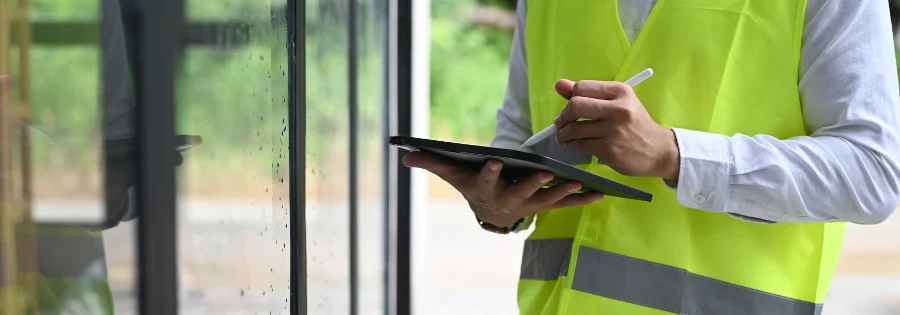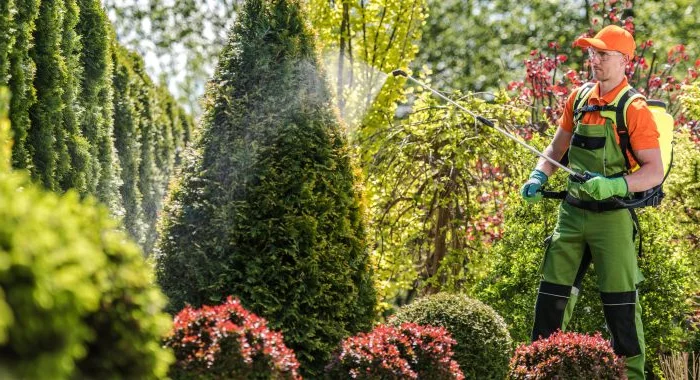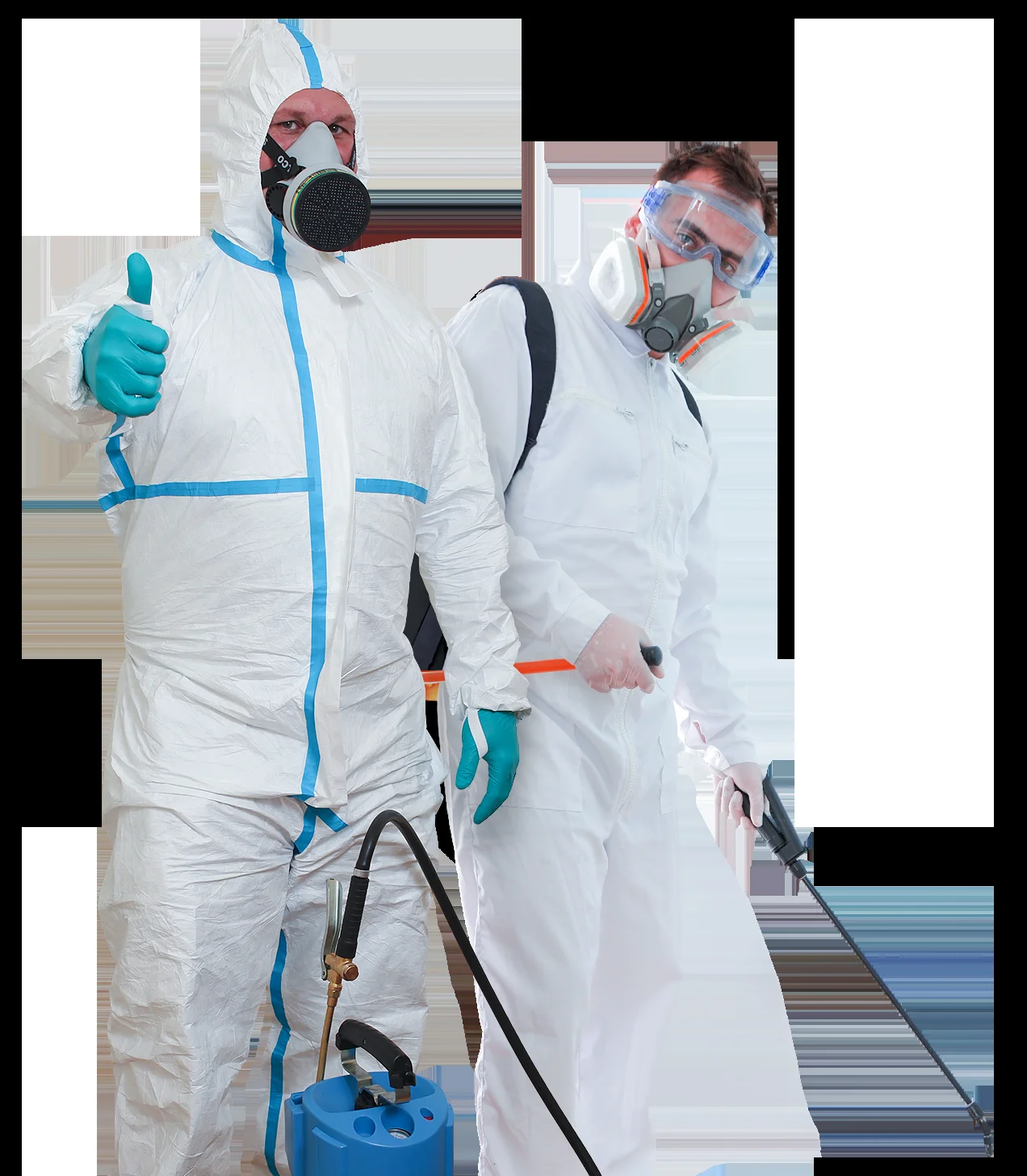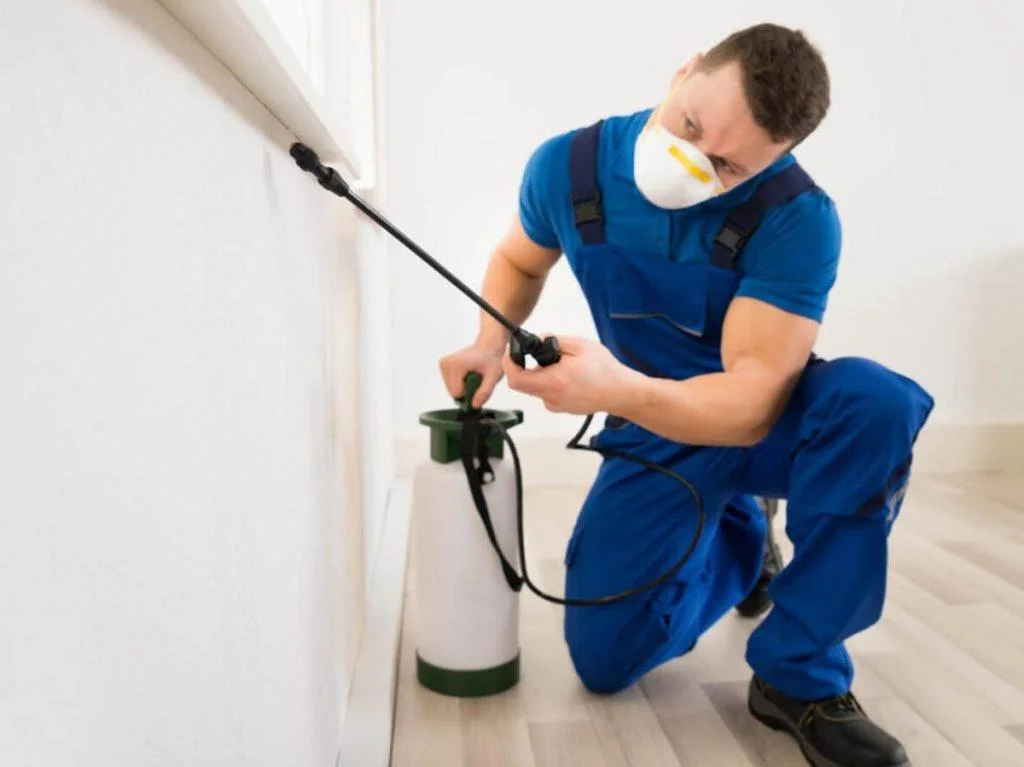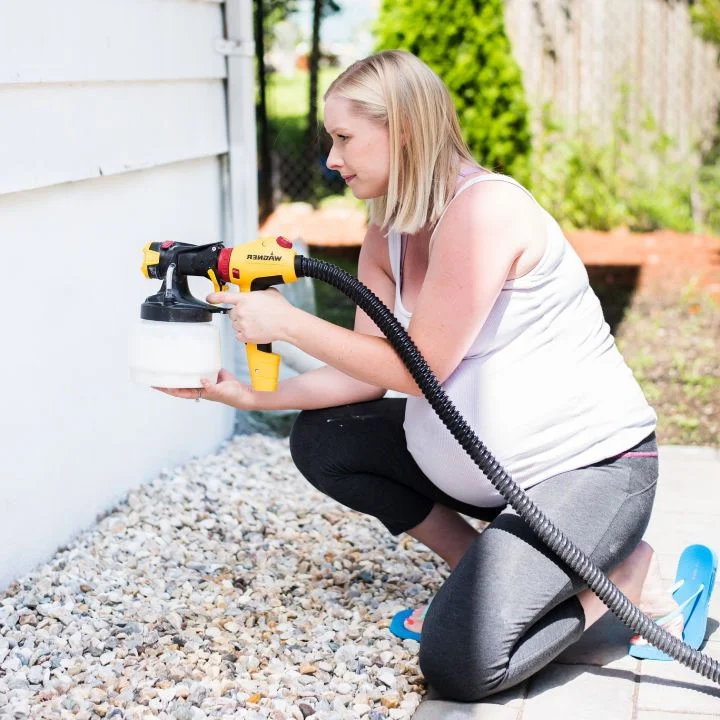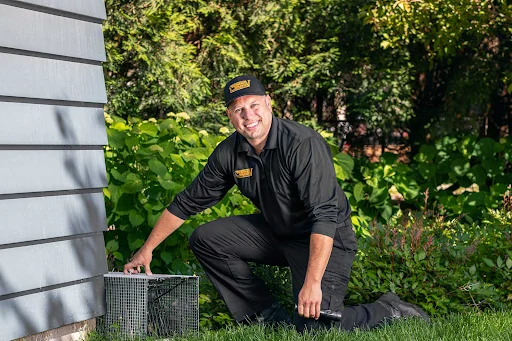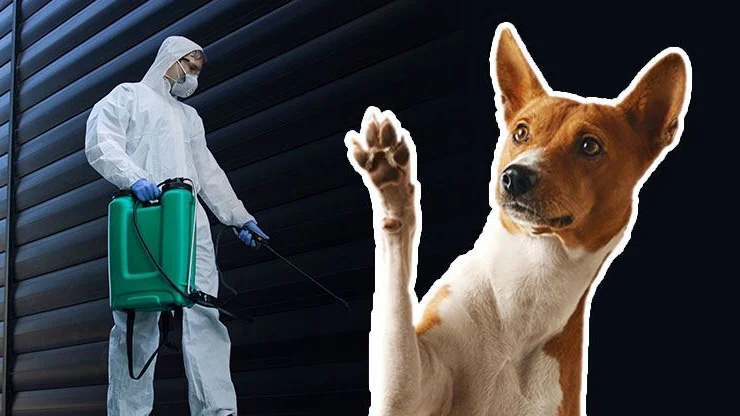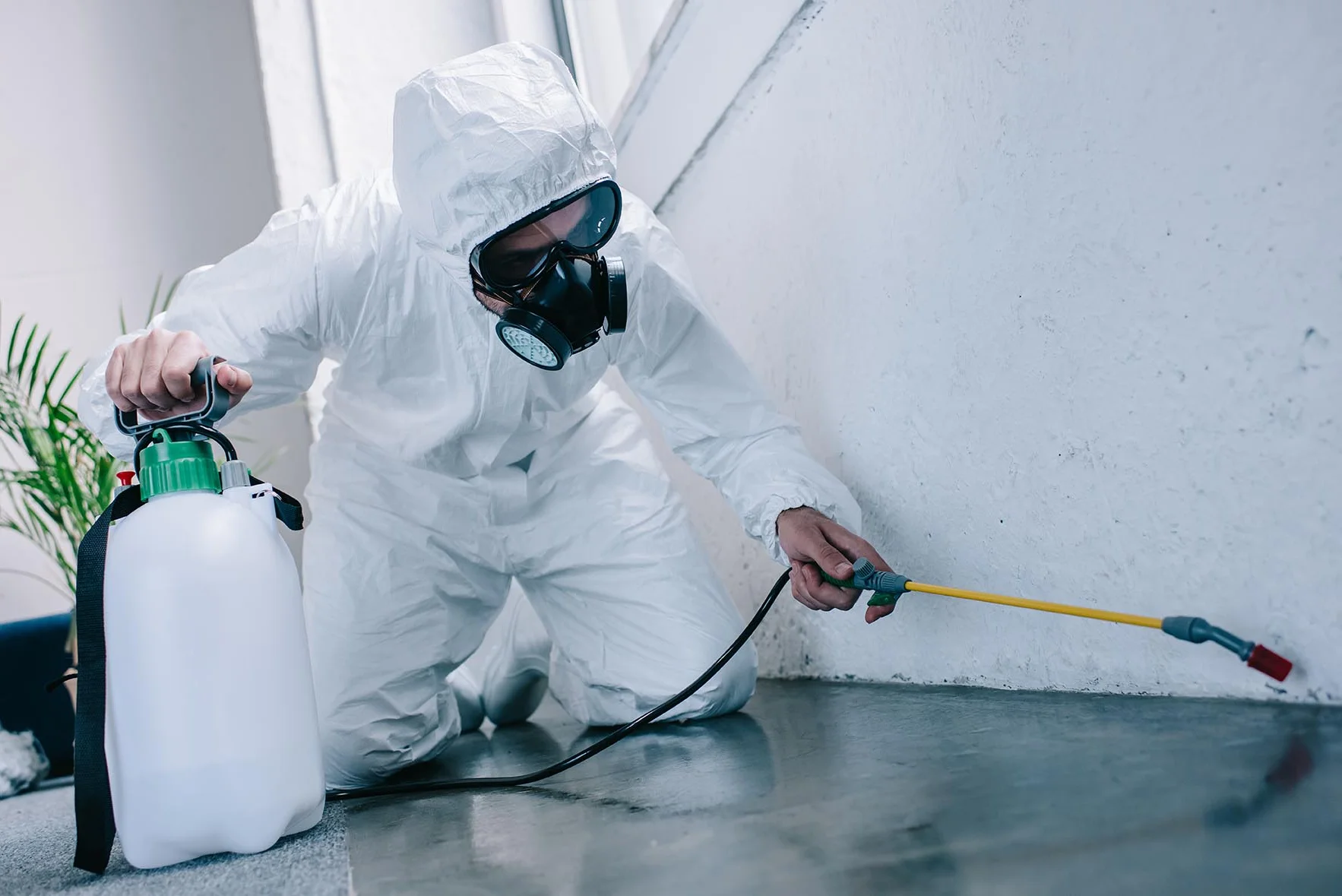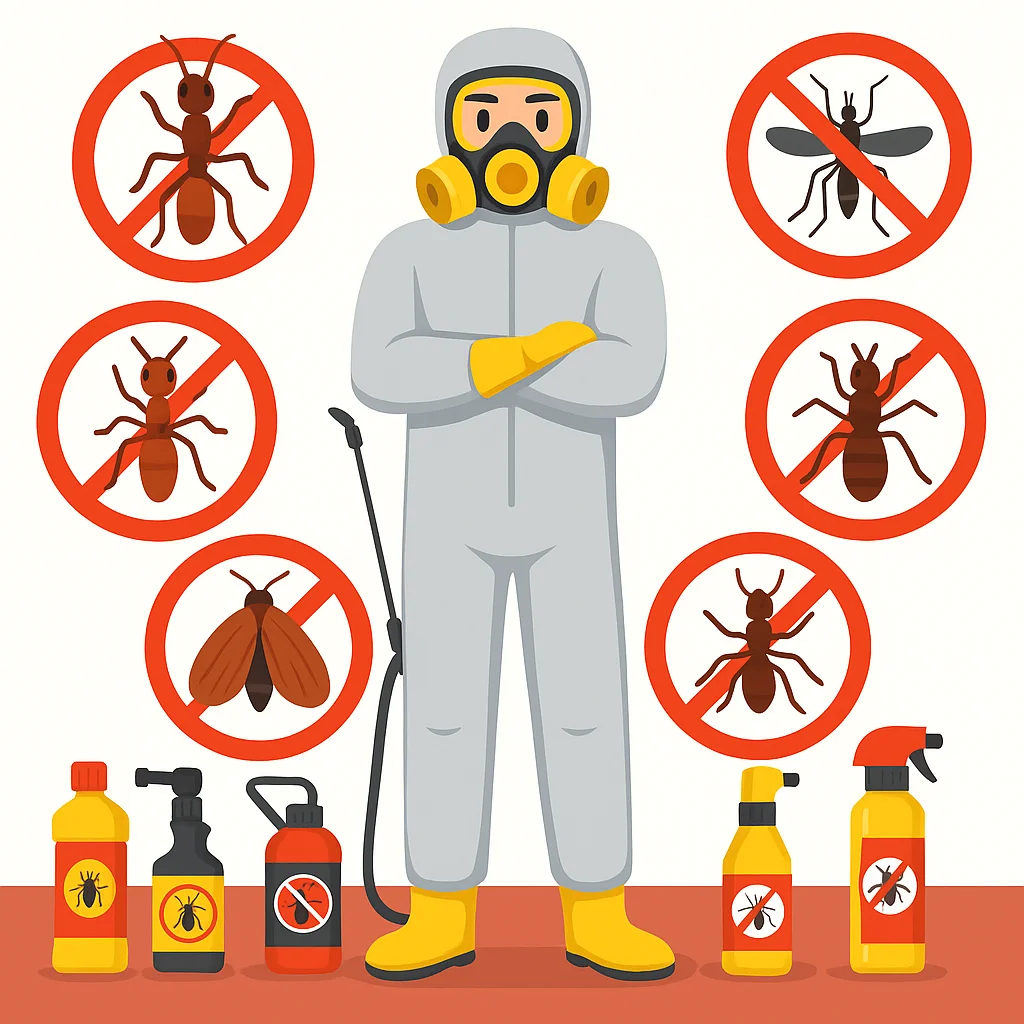Discovering centipedes scurrying across your floors or hiding in dark corners can be both startling and concerning. These fast-moving arthropods with their numerous legs and predatory nature often create anxiety for homeowners and business owners alike. While most centipedes are not dangerous to humans, their presence indicates underlying moisture problems and other pest issues that require professional attention. Effective centipede control addresses not only the centipedes themselves but also the environmental conditions that attract and sustain their populations.
Professional centipede extermination goes beyond simple elimination to include comprehensive moisture management, prey reduction, and exclusion strategies that create long-term solutions. Understanding centipede biology, behavior patterns, and habitat preferences allows pest control specialists to develop targeted treatment plans that eliminate existing populations while preventing future infestations. With proper management, properties can remain centipede-free while addressing the underlying issues that initially attracted these pests.
Centipede problem getting out of hand? Our specialists provide
emergency pest control
24/7 and comprehensive
centipede treatment to restore comfort to your space.
Get help now for fast, effective solutions!
Understanding Centipede Biology and Behavior
Centipedes are fascinating arthropods that play important roles in natural ecosystems as predators of other insects and small creatures. However, their biology and behavior patterns make them unwelcome indoor guests that require specialized control approaches:
-
Moisture-dependent lifestyle Centipedes require high humidity environments to survive and are highly sensitive to dehydration. They actively seek out damp areas like basements, bathrooms, and crawl spaces where moisture levels support their survival.
-
Predatory feeding habits As carnivorous hunters, centipedes feed on spiders, insects, and other small arthropods. Large centipede populations often indicate significant prey populations that also require management attention.
-
Nocturnal activity patterns Most centipede species are active at night when they hunt for prey, making them difficult to detect during normal daytime activities. They hide in dark, moist areas during daylight hours.
-
Rapid movement capabilities Centipedes are among the fastest-moving arthropods, capable of quick escapes when disturbed. This speed makes them particularly startling when encountered unexpectedly.
-
Seasonal migration patterns Outdoor centipedes often migrate indoors during dry periods or extreme weather conditions, leading to seasonal variations in indoor centipede activity and population pressure.
Professional centipede pest control leverages this biological knowledge to target treatments at vulnerable life stages and habitat requirements, ensuring comprehensive population management with lasting results.
Common Centipede Species and Identification
Different centipede species present varying challenges for control and require specific management approaches. Proper identification helps determine treatment priorities and methods:
House Centipede
Thorough inspection for centipede activity and habitat
House centipedes are the most commonly encountered indoor species, characterized by their long, delicate legs and grayish-yellow coloration with dark stripes. These centipedes are actually beneficial predators that hunt cockroaches, silverfish, spiders, and other household pests, but their appearance and speed make them unwelcome to most property occupants.
Despite their frightening appearance, house centipedes are harmless to humans and rarely bite unless handled directly. However, their presence often indicates moisture problems and significant prey populations that require professional attention. Effective house centipede control focuses on habitat modification and prey reduction rather than direct elimination alone.
Stone Centipede
Creating exterior barriers against centipede intrusion
Stone centipedes are shorter and more robust than house centipedes, typically found in outdoor environments under rocks, logs, and leaf litter. They occasionally invade structures when outdoor conditions become unfavorable, particularly during dry periods or extreme weather events.
These centipedes prefer cooler, more humid conditions and are often found in basements, crawl spaces, and ground-level areas of buildings. While less common indoors than house centipedes, stone centipedes can establish populations in favorable indoor environments with adequate moisture and prey availability.
Soil Centipede
Treating potential centipede entry points around structures
Soil centipedes are small, worm-like species that live primarily in soil and organic matter. They rarely invade indoor spaces but may be found in potted plants, greenhouse environments, or areas with rich organic soil brought indoors. Their small size and soil-dwelling habits make them less noticeable than other centipede species.
While not typically a major indoor pest concern, soil centipedes can indicate excess moisture in indoor plant environments or organic material accumulation that supports various pest populations. Professional assessment helps determine if soil centipede presence indicates broader environmental management needs.
Giant Desert Centipede
Found primarily in southwestern regions, giant desert centipedes can reach impressive sizes and deliver painful bites when threatened. While they typically remain outdoors, they may enter structures during extreme weather conditions or when following prey populations. Their size and potential for defensive biting make encounters particularly concerning for property occupants.
These large centipedes require specialized handling and control methods due to their size, speed, and defensive capabilities. Professional removal ensures safe elimination while addressing the conditions that attracted them to structures in the first place.
Moisture Management and Environmental Control
Environmental assessment for moisture-related pest issues
Effective centipede control requires comprehensive moisture management since these arthropods cannot survive in dry environments. Professional moisture assessment identifies the sources and conditions that create suitable centipede habitat while providing solutions that eliminate these favorable conditions without compromising property functionality or comfort.
Moisture management goes beyond simple dehumidification to include structural modifications, drainage improvements, and ventilation enhancements that create long-term environmental conditions unfavorable to centipede establishment. This approach provides sustainable control with minimal ongoing treatment requirements.
-
Humidity level assessment Professional monitoring of indoor humidity levels using calibrated instruments to identify areas where moisture exceeds thresholds that support centipede survival and reproduction.
-
Water intrusion identification Comprehensive inspection for leaks, seepage, and condensation sources that create localized high-moisture areas attractive to centipede populations.
-
Ventilation system evaluation Assessment of air circulation patterns and ventilation adequacy to ensure proper moisture control in crawl spaces, basements, and other vulnerable areas.
-
Drainage system inspection Evaluation of gutters, downspouts, foundation drainage, and grading to identify water management issues that create exterior moisture problems affecting indoor conditions.
-
Structural moisture barriers Installation or repair of vapor barriers, waterproofing systems, and moisture control materials that prevent water intrusion and maintain appropriate humidity levels.
Moisture Control Benefits
Effective moisture management not only eliminates centipede habitat but also prevents mold growth, wood rot, and other moisture-related problems that can damage property and affect indoor air quality.
Professional Centipede Treatment Methods
Precision application of centipede control treatments
Professional centipede extermination employs integrated approaches that address centipede populations while modifying environmental conditions that support their presence. Unlike simple pesticide applications, comprehensive centipede control combines targeted treatments with habitat modification and prevention strategies for lasting results.
Treatment programs are customized based on centipede species, population levels, property characteristics, and environmental factors that influence centipede activity. This scientific approach ensures maximum effectiveness while minimizing environmental impact and treatment frequency requirements.
| Treatment Method |
Application Areas |
Effectiveness Period |
| Residual Perimeter Treatments |
Foundation areas, entry points, and exterior barriers where centipedes contact surfaces
|
60-90 days of protection against centipede intrusion; weather-resistant formulations maintain effectiveness.
|
| Crack and Crevice Applications |
Baseboards, gaps, and hiding places where centipedes shelter during daylight hours
|
Extended protection in protected areas; targets centipedes in preferred harborage locations.
|
| Moisture Reduction Strategies |
Dehumidification, ventilation improvement, and water source elimination
|
Long-term environmental modification that makes areas unsuitable for centipede survival.
|
| Prey Population Management |
Treatment of insects and arthropods that serve as centipede food sources
|
Reduces centipede attraction and carrying capacity by eliminating food sources.
|
| Exclusion and Sealing |
Entry point sealing, gap filling, and physical barriers to prevent access
|
Permanent protection when properly installed and maintained; prevents new infestations.
|
Tired of centipedes in your home? Our expert technicians provide
comprehensive centipede pest control with guaranteed results –
schedule your service and enjoy centipede-free living!
Interior vs Exterior Centipede Management
Interior Centipede Control
Comprehensive interior centipede management
Interior centipede control focuses on eliminating existing populations while addressing the environmental conditions that attracted them indoors. This approach emphasizes safety for family members and pets while providing effective population reduction in living spaces. Professional interior treatments use targeted applications that minimize exposure while maximizing centipede elimination.
Key interior strategies include moisture control in bathrooms, basements, and laundry areas, treatment of hiding places like baseboards and closets, and elimination of prey populations that sustain centipede activity. Interior management also addresses entry points and exclusion work that prevents outdoor centipede migration into treated spaces.
Exterior Prevention and Barriers
Foundation treatment creating centipede barriers
Exterior centipede management creates protective barriers that intercept centipedes before they reach indoor areas. These treatments target foundation perimeters, landscaping zones, and outdoor habitat areas where centipede populations establish and from which they migrate toward structures during unfavorable conditions.
Professional exterior treatments address moisture sources like irrigation systems and drainage problems, remove harborage sites like mulch and debris accumulations, and apply residual treatments that provide long-term protection against centipede intrusion attempts.
Integrated Pest Management for Centipedes
Integrated pest management approach for centipedes
Integrated Pest Management (IPM) for centipedes emphasizes sustainable, long-term solutions that address root causes rather than providing temporary symptom relief. This holistic approach combines environmental modification, biological understanding, and targeted treatments to create comprehensive management programs that provide lasting results with minimal environmental impact.
IPM programs recognize that centipede problems often indicate broader environmental issues that affect multiple pest species. By addressing these underlying conditions, comprehensive programs provide protection against various moisture-loving pests while improving overall property conditions and reducing ongoing pest pressure.
-
Environmental monitoring Regular assessment of moisture levels, humidity conditions, and environmental factors that influence centipede activity and population development in treated areas.
-
Biological control enhancement Protection and encouragement of natural centipede predators while managing prey populations that support centipede establishment and reproduction.
-
Habitat modification programs Systematic changes to landscaping, drainage, storage practices, and property maintenance that reduce centipede attractiveness and carrying capacity.
-
Population monitoring systems Implementation of monitoring tools and techniques that detect centipede activity early and track treatment effectiveness over time.
-
Prevention education Property owner training in moisture management, maintenance practices, and environmental modifications that support long-term centipede prevention.
Seasonal Centipede Activity and Management
Spring (March-May)
- Increased outdoor activity as temperatures warm
- Breeding season begins for many species
- Higher indoor migration during wet periods
- Optimal time for exterior prevention work
Recommendation: Schedule comprehensive moisture assessments and exterior barrier treatments before peak activity season.
Summer (June-August)
- Peak outdoor centipede populations
- Drought-driven indoor migration
- Young centipedes reaching maturity
- Maximum prey availability outdoors
Recommendation: Focus on moisture management and interior treatments during drought-driven invasion periods.
Fall (September-November)
- Shelter-seeking behavior increases
- Higher structure invasion attempts
- Ideal conditions for exclusion work
- Preparation for winter survival
Recommendation: Peak season for exclusion work and sealing entry points before winter shelter-seeking behavior.
Winter (December-February)
- Reduced activity in cooler climates
- Concentration in heated indoor areas
- Continued activity in mild climates
- Planning season for comprehensive programs
Recommendation: Address indoor moisture issues and plan comprehensive spring prevention strategies.
Health and Safety Considerations
Safe, family-friendly centipede control methods
While most centipede species pose minimal direct health risks to humans, their presence can create psychological stress and indicate environmental conditions that support other more dangerous pests. Professional centipede control addresses both the immediate discomfort of centipede encounters and the underlying conditions that may harbor more serious pest and health concerns.
Safety considerations include proper handling of large centipede species that can deliver painful bites, use of family-safe treatment methods in homes with children and pets, and comprehensive moisture management that prevents conditions favoring disease-carrying pests and harmful mold growth.
-
Bite prevention and treatment While rare, large centipede bites can be painful and may cause localized swelling. Professional removal eliminates bite risks while ensuring safe handling of aggressive species.
-
Allergy considerations Some individuals may experience allergic reactions to centipede secretions or shed body parts. Complete elimination prevents ongoing exposure for sensitive individuals.
-
Secondary pest prevention Centipede presence often indicates conditions that support more dangerous pests like disease-carrying insects and venomous spiders that require professional management.
-
Psychological comfort Many people experience significant distress from centipede encounters. Professional elimination provides peace of mind and comfortable living environments.
-
Property protection Moisture conditions that support centipedes can also damage structures through mold growth, wood rot, and other moisture-related deterioration processes.
Commercial Centipede Management
Professional commercial centipede management
Commercial properties face unique centipede challenges related to customer comfort, employee productivity, and business reputation. Commercial centipede control must address these concerns while providing effective management that maintains professional appearances and complies with industry standards and regulations.
Businesses require discreet, effective centipede management that doesn't disrupt operations while providing comprehensive protection for employees, customers, and inventory. Professional commercial services include customized treatment schedules, emergency response capabilities, and ongoing monitoring that ensures consistent protection.
Industry-Specific Challenges
-
Healthcare facilities Medical environments require specialized approaches that consider patient safety, equipment sensitivity, and regulatory compliance while providing effective centipede control.
-
Food service operations Restaurants and food processing facilities need centipede management that complies with food safety regulations while addressing moisture sources that attract centipedes.
-
Hospitality industry Hotels and resorts require comprehensive centipede control that protects guest comfort while maintaining aesthetic appeal and avoiding disruption to guest services.
-
Office buildings Commercial offices need discreet centipede management that maintains professional environments while addressing moisture issues that may affect building systems and employee comfort.
-
Educational institutions Schools and childcare facilities require safe, effective centipede control that protects children while providing educational opportunities about pest awareness and prevention.
What Our Clients Say About Centipede Control
"We had centipedes constantly appearing in our basement until PestControl100 addressed our moisture problems and treated the area. Their comprehensive approach worked perfectly, and we haven't seen a centipede in months!"
- Lisa M., Homeowner
★★★★★
"Our restaurant had centipede issues that were affecting customer experience. PestControl100's team worked around our schedule and solved the problem without disrupting our operations. Professional and effective service."
- Carlos R., Restaurant Manager
★★★★★
"The house centipedes in our bathroom were driving my family crazy. PestControl100 not only eliminated them but also fixed the humidity problems that were attracting them. Great comprehensive service!"
- Jennifer K., Family Homeowner
★★★★★
Frequently Asked Questions
Are centipedes dangerous to humans and pets?
Most centipede species are not dangerous to humans or pets. House centipedes, the most common indoor species, rarely bite and are actually beneficial predators. However, large centipede species can deliver painful bites when threatened, and some people may experience allergic reactions. While not typically dangerous, centipede presence often indicates moisture problems and other pest issues that require professional attention.
Why do I keep finding centipedes in my home?
Centipedes require high moisture environments and abundant prey to survive. If you're finding centipedes indoors, it typically indicates moisture problems (like leaky pipes, poor ventilation, or high humidity) and the presence of other insects that centipedes hunt. Professional assessment can identify moisture sources and prey populations that need to be addressed for effective long-term control.
How effective are professional centipede treatments?
Professional centipede control is highly effective when it addresses both the centipedes and the environmental conditions that support them. Treatments typically provide immediate population reduction within 1-2 weeks, with continued improvement as moisture issues are resolved and prey populations decline. Comprehensive programs that include moisture management and exclusion work provide long-term protection with minimal ongoing treatment needs.
Can I prevent centipedes without professional treatment?
While moisture reduction and basic exclusion can help reduce centipede attraction, professional treatment is typically necessary for effective control because centipede problems often involve complex moisture issues, hidden harborage areas, and prey populations that require specialized knowledge and equipment to address properly. DIY approaches may provide temporary relief but rarely address underlying causes that allow centipede populations to persist or return.
Centipede Prevention Tips for Property Owners
Implementing strategic prevention measures against centipedes
While professional centipede control provides the most effective long-term solutions, property owners can take several proactive steps to reduce centipede attraction and establishment. Understanding what creates favorable centipede habitat helps property owners make informed decisions about maintenance practices and environmental management.
Prevention strategies focus on moisture control, exclusion, and habitat modification that make properties less suitable for centipede survival. These approaches work best when combined with professional assessment and treatment programs that address existing populations and underlying environmental issues.
-
Moisture control measures Use dehumidifiers in basements and crawl spaces, repair leaky pipes and faucets promptly, improve ventilation in bathrooms and laundry rooms, and ensure proper drainage around foundations.
-
Exclusion and sealing Seal cracks and gaps around foundations, install door sweeps and weather stripping, repair damaged screens and vents, and caulk gaps around plumbing and electrical penetrations.
-
Habitat modification Remove organic debris and mulch near foundations, eliminate clutter in storage areas, keep firewood and materials elevated off the ground, and maintain proper grading for water drainage.
-
Regular maintenance Clean and organize storage areas regularly, inspect for moisture problems during routine maintenance, remove spider webs and other prey insects, and maintain gutters and downspouts properly.
-
Professional monitoring Schedule annual moisture assessments with qualified professionals, have HVAC systems inspected for proper humidity control, and address structural issues that create moisture problems promptly.
Centipede Control Investment and Long-term Benefits
Professional centipede extermination represents a valuable investment in property comfort, health protection, and long-term moisture management. Understanding the factors that influence centipede control costs helps property owners make informed decisions about treatment timing and scope.
| Service Component |
Cost Factors |
Long-term Benefits |
| Initial Assessment |
Property size, moisture evaluation complexity, accessibility of areas requiring inspection
|
Identifies all moisture sources and centipede attractants, prevents future problems through comprehensive planning.
|
| Treatment Applications |
Infestation severity, treatment area size, product selection based on safety requirements
|
Provides immediate population reduction and ongoing protection through residual treatments and habitat modification.
|
| Moisture Management |
Scope of moisture problems, necessary equipment and modifications, accessibility of treatment areas
|
Eliminates root causes of centipede problems while preventing mold, rot, and other moisture-related damage.
|
| Exclusion Work |
Number of entry points, materials required, complexity of sealing work needed
|
Provides permanent protection against centipede intrusion and other moisture-loving pests.
|
| Ongoing Maintenance |
Monitoring frequency, seasonal treatment needs, property maintenance requirements
|
Maintains centipede-free conditions and protects property value through moisture management and pest prevention.
|
Comprehensive Value
Professional centipede control typically costs less than addressing the moisture damage, mold problems, and structural issues that result from untreated moisture conditions that attract centipedes.
Advanced Centipede Detection and Management Technology
Cutting-edge technology for centipede detection and control
Modern centipede pest control incorporates advanced technology to improve detection accuracy, moisture assessment precision, and treatment effectiveness. These technological advances provide property owners with better results, more accurate diagnostics, and improved long-term prevention capabilities.
Technology-enhanced centipede control represents the evolution from basic pesticide applications to comprehensive environmental management that addresses root causes of centipede problems with scientific precision and minimal environmental impact.
-
Moisture detection equipment Professional-grade moisture meters and thermal imaging cameras detect hidden moisture sources in walls, floors, and other concealed areas where centipedes establish populations.
-
Environmental monitoring systems Digital humidity sensors and data loggers track moisture conditions over time, identifying patterns and conditions that support centipede activity.
-
Precision application tools Specialized equipment ensures accurate treatment placement in centipede harborage areas while minimizing exposure to non-target areas and reducing environmental impact.
-
Remote monitoring capabilities Wireless sensors alert property owners and pest professionals to moisture spikes or environmental changes that could lead to centipede problems.
-
Digital documentation systems Comprehensive record-keeping tracks treatment effectiveness, environmental conditions, and seasonal patterns to optimize control strategies over time.
Don't let centipedes make your home uncomfortable. Trust PestControl100 for comprehensive
centipede control that eliminates current problems and prevents future infestations –
contact us today for lasting relief and peace of mind!
Centipede Control Service Areas
Our certified centipede specialists provide comprehensive control services throughout regions with active centipede populations. We understand local species, seasonal patterns, and environmental factors that influence centipede activity in your area.
Moisture-Prone Areas
We specialize in centipede control for properties in humid climates, coastal areas, and regions with high moisture levels. Our teams understand the unique challenges of moisture management in different geographical and climate conditions.
Comprehensive Solutions
From single-family homes to large commercial complexes, our centipede control services address the unique moisture and environmental challenges of different property types. We provide customized solutions that work for your specific situation and environment.
Our Centipede Control Coverage Map

